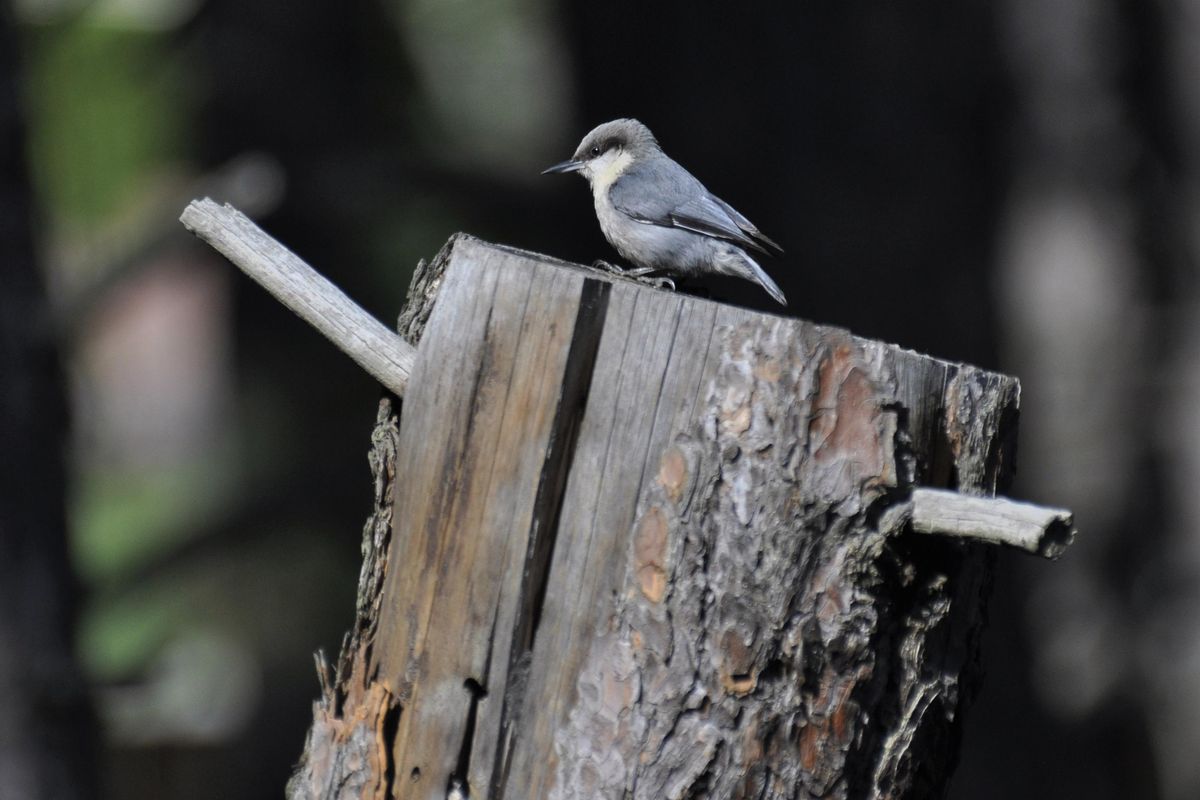Tidy yard tradition hits a snag

The Landers yard won’t win any Better Homes & Gardens awards, but a few discriminating bird species find our slightly unkempt acre a fine place to raise a family.
It has worked out well for our family, too.
Little did I know that a few bird-friendly decisions dating back some 20 years would be adding so much joy and conversation in our household each day this month, especially for my 95-year-old mother-in-law.
A wildlife-friendly yard has prompted me to stop putting out bird seed. Bird feeding attracts deer and wild turkeys while potentially exposing songbirds to predation and disease.
Making water available for wildlife year-round is still important, but putting out feed for birds isn’t necessary in a somewhat shaggy yard.
Other than a couple of small patches of lawn in the front of the house, the rest of our yard is semi-wild, mostly graced with native plants, fescue, shrubs and a mixture of trees that provide cover, fruit and seeds.
I’ve built a few bird nest boxes. Some are occupied. Others have been taken over by squirrels.
But one of my best long-term habitat investments has been creating and leaving a few snags around the lot for the use of cavity-nesting birds.
Ice Storm cleanup in 1996 required us to hire a tree removal company to take out a few native ponderosa pines. More pines needed to be removed a few years later because of sewer line construction through the yard.
Both times, I asked the tree company to create and leave a few snags.
A truly healthy forest always contains some amounts of diseased, dying and dead trees. Ideally, a good wildlife yard should, too. Native wildlife evolved with habitat untidied by man.
In one case, the logger removed the top portion of a pine that was too close to our house and left a nonthreatening, branchless snag 15 feet tall by about 12 inches in diameter.
I prepped the snag for birds by predrilling a few 1-inch holes into its northeast side – away from prevailing wind and rain – where birds might someday enter, excavate rotting wood and raise broods.
That snag has been chosen as a nursery for years by pygmy nuthatches. Situated off the deck and easily seen from a kitchen window, the courting, nesting and family rearing activity has offered hours of entertainment for our family.
A larger diameter snag has housed northern flickers in past years and all of the snags in various stages of decay are providing a smorgasbord of food for woodpeckers and other birds.
This is why guidelines are set for prescriptive timber harvest to leave some snags. It’s why woodcutting is regulated in some areas.
A working forest can and should be hospitable to wildlife. So should a yard.
Some people consider dead trees to be unattractive, wasteful and unhealthy, but a small percentage of snags are as essential as seedlings to a natural forest ecosystem.
Cavity-nesting birds such as bluebirds have suffered from wildfire suppression and mankind’s aversion to dead wood.
Species have preferences for snag diameter and location. The Lewis’s woodpecker, for example, prefers a snag 21 inches in diameter in densities of 1 to 3 per acre and a canopy cover of 10-40 percent and shrub cover greater than 40 percent for insect production. Wildlife biologists sometimes work with foresters to tailor timber sales to specific species needs.
Ah, but I have just one lot in a neighborhood. So I do what I can with what I have.
Snags provide essential habitat for approximately one-quarter of all breeding birds in western coniferous forests. Dead trees are used by birds for foraging, cavity nesting, perching and food storage.
Woodpeckers use dead trees (and sometimes house roofs) for drumming to peck out communication and identify territories.
Primary cavity nesters, such as woodpeckers, are keystone species that excavate their own nest holes, creating habitat for themselves and other wildlife.
Secondary cavity nesters such as bluebirds occupy natural and abandoned cavities.
Some staghorn sumac trees off our back deck have been dying out after 30 years, but I haven’t been quick to remove the carnage that’s just beyond our deck. Branches that break off create openings for cavity nesters.
Even though nuthatches have excavated two holes in one dead sumac snag for years, I almost cut it out last fall because of windstorm damage. I’m glad I held off.
This spring a pair of house wrens has taken over one of the old nuthatch holes. Every morning around 5:30 when I head out the back to walk the dogs, I’m greeted with a bubbly song that seems impossibly long to come from the lungs of such a small ball of feathers.
I see the wrens flitting through the tangles of branches and hopping to hunt bugs in the unkempt shrubbery around the back of the house.
But mostly I hear and enjoy them and their cheerful trilling songs, all made possible by a snag.